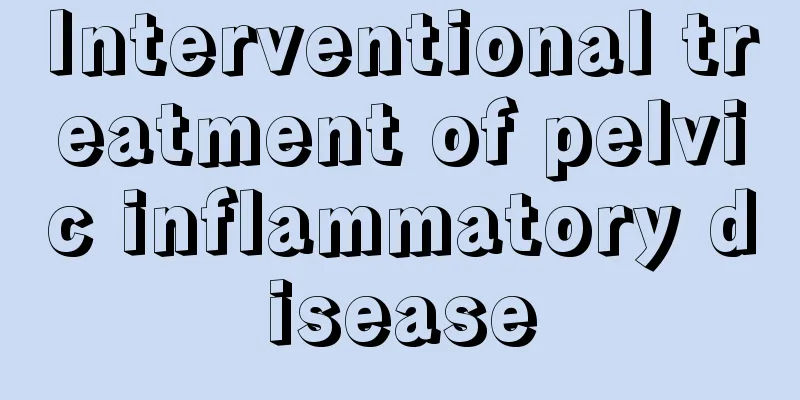Interventional treatment of pelvic inflammatory disease

|
We all know that if women do not take good care of their bodies after childbirth or miscarriage, it is very likely to cause pelvic inflammatory disease. After getting pelvic inflammatory disease, it is particularly difficult to recover and it is very easy to relapse. When treating pelvic inflammatory disease, interventional treatment methods should be selected, because this can deliver the medicine directly into the female body and cure it as soon as possible. So what is interventional treatment for pelvic inflammatory disease? Prevention of pelvic inflammatory disease 1. Pay attention to menstrual hygiene and avoid sexual intercourse during menstruation (1) During menstruation, women’s body resistance is low. If they do not pay attention to hygiene at this time, they are very likely to get infected. (2) During menstruation, choose sanitary napkins produced by regular manufacturers, change underwear frequently, and avoid taking baths in a tub. 2. Minimize the number of miscarriages (1) Take good contraceptive measures at ordinary times. (2) After an unexpected pregnancy, go to a regular hospital for treatment. Avoid having sex for a period of time after the operation and pay attention to hygiene. 3. Treat diseases promptly If you find that you have diseases such as appendicitis, you should seek timely treatment to prevent the inflammation from spreading to the pelvic tissue and causing pelvic inflammatory disease. The best treatment for pelvic inflammatory disease: interventional therapy Experts pointed out that interventional therapy is to introduce high-concentration and high-efficiency drugs directly into the lesion site through puncture technology under the guidance of the B-ultrasound visual system, accurately kill pathogenic microorganisms, shorten the medication time, and continuously flush them out of the body to achieve the purpose of sterilization and anti-inflammation. Interventional therapy has five main advantages: 1. Safe, painless, and has little side effects on the human body. 2. No need for hospitalization, you can leave after treatment, and the cost is lower. 3. Comprehensively and effectively kill pathogenic bacteria and eliminate viruses in the body. 4. No bleeding, no traumatic damage to the lesion tissue, easy treatment and less likely to relapse. There are many treatment options for fallopian tube obstruction, but not all of them are suitable. The choice of treatment plan needs to be based on the specific location and degree of fallopian tube blockage, and should not be done blindly. If the blockage is in the interstitial part or isthmus, then guidewire intervention can be used for treatment. However, if it is water accumulation in the ampulla or occlusion at the fimbria, interventional treatment is definitely not an option. Moreover, intervention is not a panacea. If the interstitial isthmus is severely blocked, the possibility of interventional cure is very small. |
<<: How to do pelvic inflammatory disease physical therapy
>>: Pregnancy abdominal cramps pain
Recommend
Is it really so “difficult” for Clostridium difficile to appear?
Is it really so “difficult” for Clostridium diffi...
Can a mother still breastfeed if she has diarrhea?
Many women experience diarrhea during breastfeedi...
What are the gynecological examination items for unmarried women?
When unmarried women undergo physical examination...
The color of your quilt really affects your sleep quality! Change it now!
Can the color of the quilt affect your sleep? ——R...
Quick pain relief for menstrual cramps
We often call the menstrual period that women hav...
Ruan Xiangyan: Guard the source of life and save patients' fertility!
As a female-specific gonadal organ, the ovary pla...
Nielsen: A study on the viewing behavior of all samples of Chinese smart TV users and the value of OTT advertising
Background In 2013, the sales volume of smart TVs...
Dieting may cause menstrual irregularities
There are more and more obese people around us. T...
Can I eat millet porridge during menstruation?
Millet is actually rich in a lot of vitamins. In ...
What medicine should I take for pelvic inflammatory disease and lower abdominal pain
Women who do not pay attention to hygiene on a da...
How long after hysteroscopy can I exercise?
When women suffer from gynecological diseases, th...
15-year-old girl's breast development picture
Girls in puberty have long been concerned about t...
There is a skin tag on the vulva
A skin tag is a soft, pigmented growth that attac...
What's the best private area wash?
The female private parts belong to the female rep...
The 7 most harmful postures for women's health
White-collar workers in the workplace work in fro...









